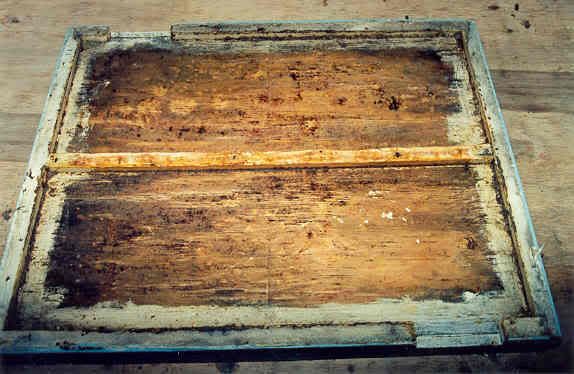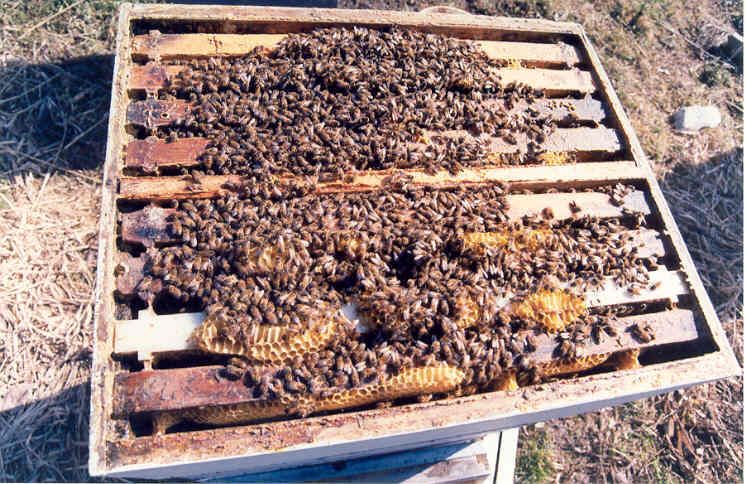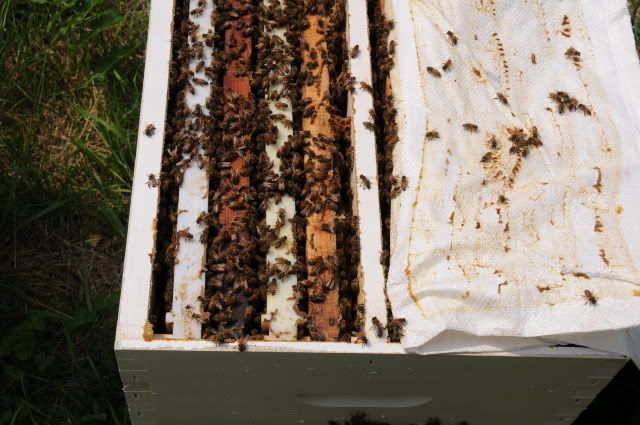It is douple queen system and not nuc system.
But that system is a danger to the honey yield. When it is better that the hive has no brood to be reared in mainflow, now you have in picture 2 queens which fill the hive with brood. They concume the honey yield to larva rearing.
Nuc means a small colony, like 3 or 5 frames.
.
Mr. Finman, in your haste to be critical, you aren't listening. Let me explain my setup a little better.
My apiary, as a whole, is divided into three segments.
1. Production Colonies: Full size colonies with 3 box brood chamber. Used for producing honey. Some of the breeders I use are selected from this group, by performance.
2. Nucleus colonies: These are setup between mid-June and mid-July, in a standard Lang brood box with central divider, creating two 4 frame cavities. The divider can be a solid board or a movable division board feeder. The divider, whichever type used, prevents the bees and queens from crossing over to the other cavity. They can be maintained in the single box, or can be expanded upwards by adding a 4 frame box (super) on top of each nuc. I have no intention of producing honey with these nuclei. They are for growing bees, replacement colonies for next year, and a number of over-wintered nuclei are used as brood factories, to create all the nuclei made this year. The system is self supporting, and it supports the production side of the apiary.
Even though I don't aim for making honey with these nucs, they can't help themselves. The earliest made, draw their foundation and fill them on the main flow. They have to be removed and replaced with more, or the little colonies will swarm. In 2012 I harvested 3 drums of honey from the nuclei. Not a lot when compared to the 100+ from the production colonies, but honey just the same.
3. Mating Nuclei: These are 4 way nucs in standard Lang boxes, and are used for mating queens. During the season, each nuc has 4 mini-combs, separated by a division board feeder. On the last catch, they are combined into 2 way nucs, with 8 combs and the feeder. A box with 10 additional mini-combs is given each, and they are moved to wintering yards for the goldenrod flow. The nucleus colonies re-stock these mating nucs with bees if necessary, but only when too many were lost in the winter. Otherwise, the mating nuclei support themselves.
So, do you see how the three branches of my apiary support each other? Do you really consider this to be "mad"?






















































